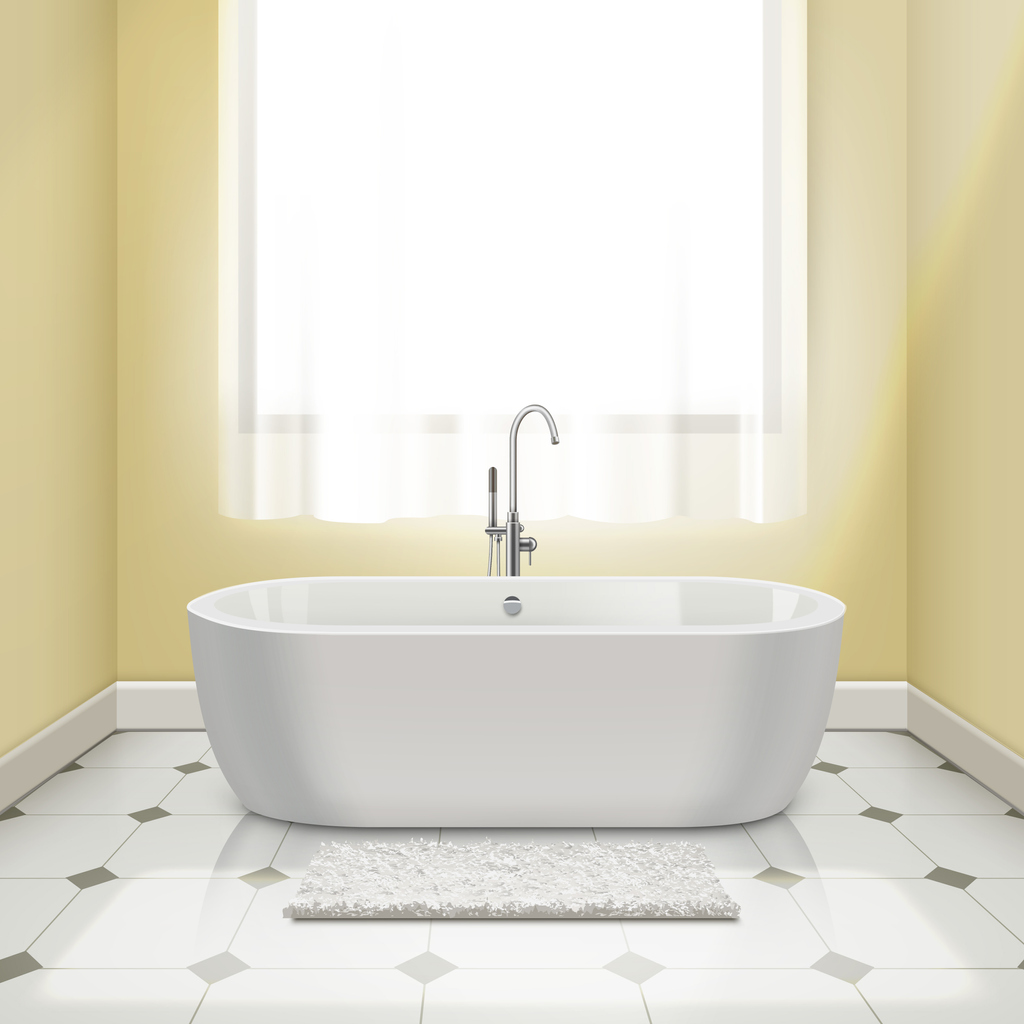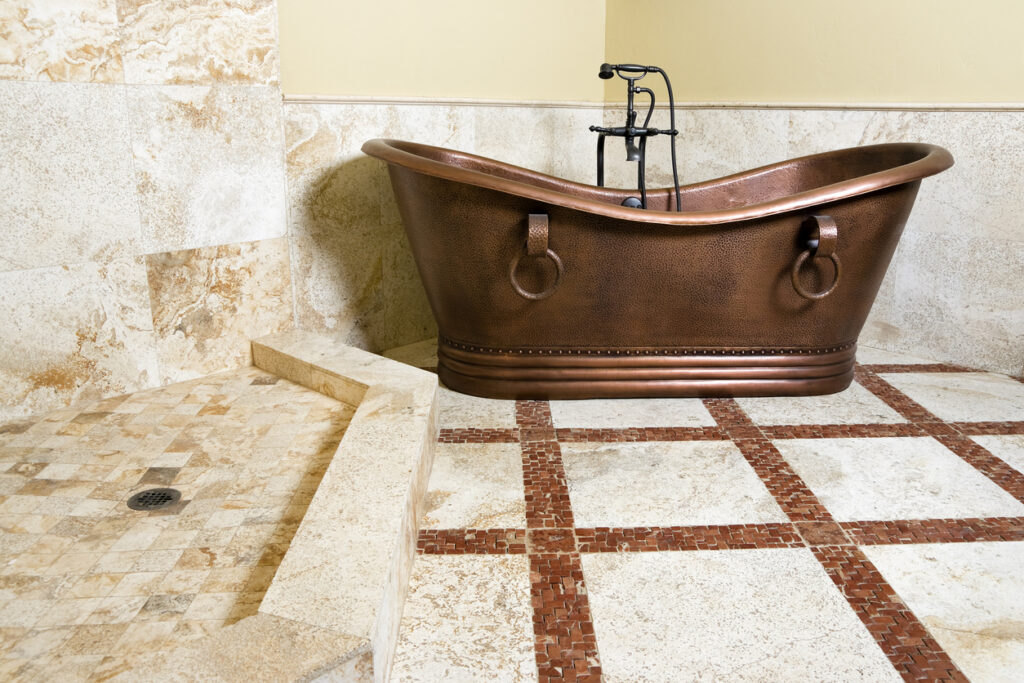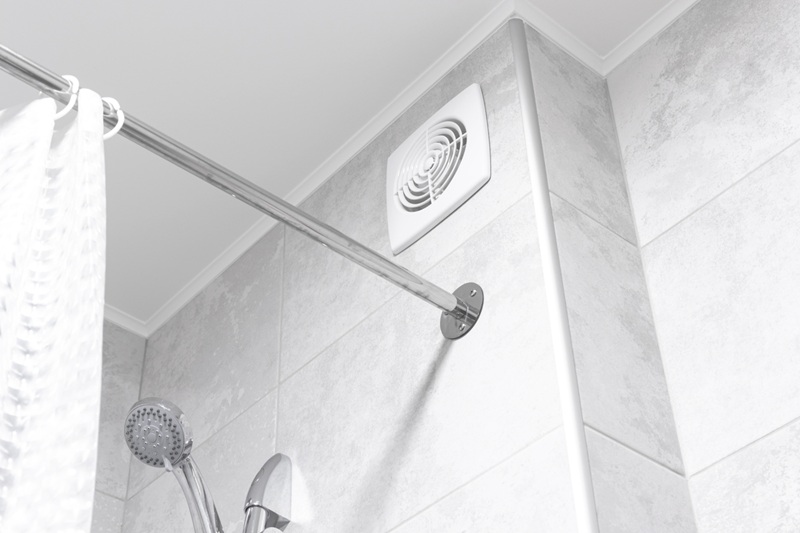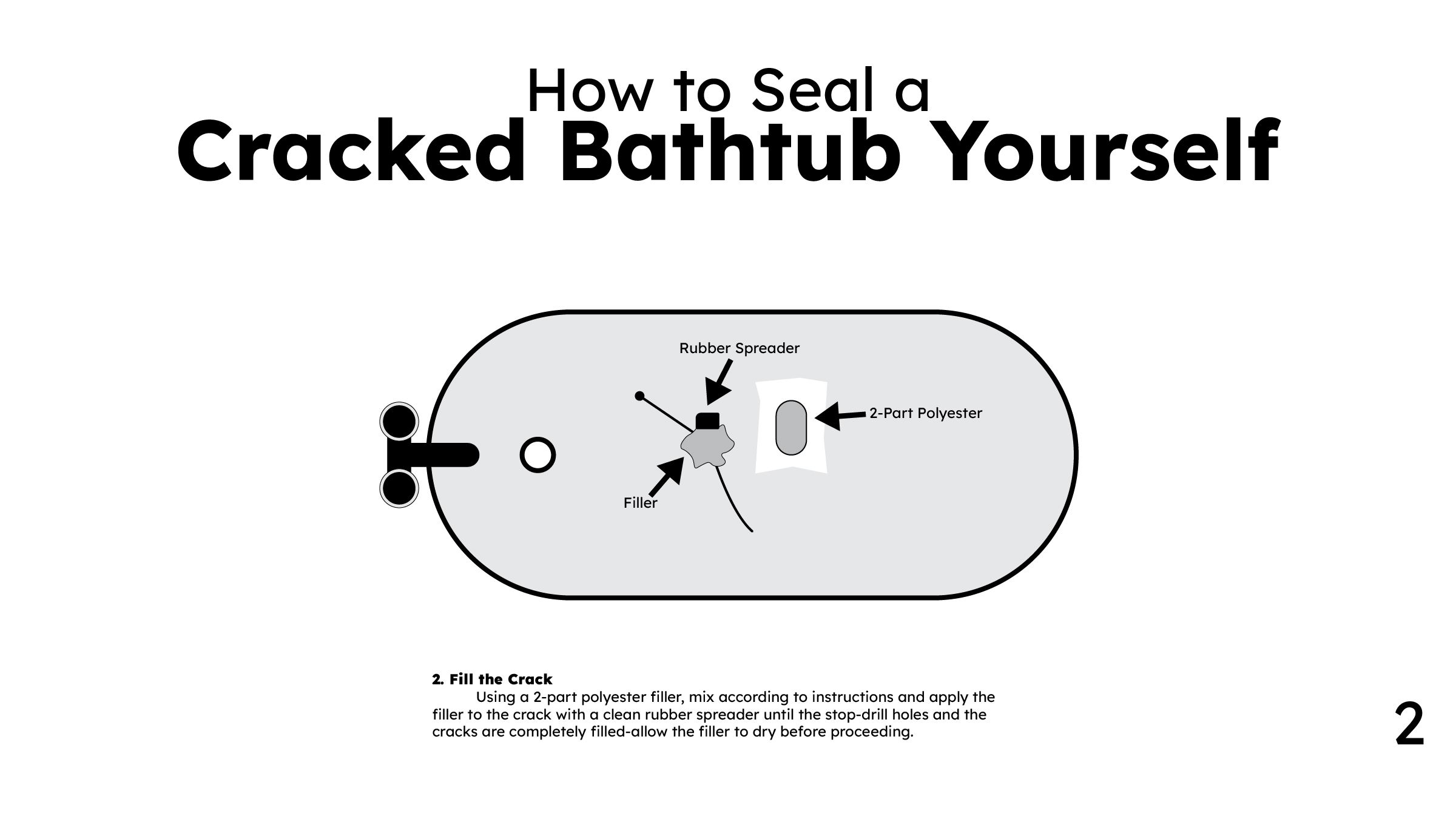
The Best States for House Flippers: 2025 Study
A new study by Badeloft USA analyzes the best U.S. states for house flippers, ranking them based on key factors such as
Today’s bathtub choices are plentiful with a host of styles, shapes, sizes, and materials to choose. The choice often comes with confusion. Which bathtub material is better? Which is more affordable? Why is one material type more expensive than another?
Use the freestanding bathtub material comparisons below to get a better understanding of the different types of tubs on the market today.
To feel the quality of stone resin, simply request a free material sample from Badeloft (shown below).
| Stone Resin Bathtubs | Cast Stone Bathtubs | |
| Material | Real stone | Concrete slurry |
| Discoloration | Impervious | Permeable |
| Weight | Lighter | Heavy |
| Price | $$ | $$$ |
| Cleaning/maintenance | Easy | Easy |
| Variety | Yes | Yes |
Stone resin bathtubs are made from real stones that are crushed up and then bound by polymer resin and natural minerals while cast stone bathtubs contain concrete slurry instead of resin. The result is a concrete gray casting that must then be coated with a colored finish to mimic the texture and color of the actual stone. Cast stone must be well sealed because exposure to water will severely discolor the pieces. Resin, by its very nature, is mostly impervious to discoloration by water. For example, cultured marble stone bathtubs typically feature a blend of crushed limestone, resins, and fillers with a clear gel topcoat. Cast stone tends to be heavier, and more expensive than stone resin. Both are easy to clean and maintain. If the gel coat of cast stone wears off, cracks may appear, and the porous surface will be harder to clean.
Stone resin bathtubs are nonporous with superior resistance against mold, bacteria, stains, dirt, heat, abrasions, chemicals, flaking and breakage. Should breakage occur, repairs are possible. Stone resin also has the edge over cast stone regarding durability, heat retention, and cost. Stone resin bathtubs are among the easiest to care for, too since they are scratch- and stain-resistant.
Both materials can be molded into virtually any tub style, size, and shape, resulting in comfortable bathing experiences.

| Stone Resin Bathtubs | Acrylic Bathtubs | |
| Weight | Heavier | Lighter |
| Cleaning/maintenance | Easy | Easy |
| Durability | Excellent | Good |
Acrylic tubs are made from vacuum-formed acrylic sheets reinforced with fiberglass. Acrylic is lighter than stone resin and quite easy to install, though these bathtubs can feel a bit flimsy as a result. Acrylic tubs require proper reinforcement during installation, particularly on their stress points. Both stone resin bathtubs and acrylic tubs feature a non-porous surface that’s easy to clean and repairable should the surface become damaged or scratched. The finish on acrylic tubs will scratch and discolor over time. Acrylic tubs are far less durable and more vulnerable to scratches and breaks, resulting in more repair costs over the lifespan.
Acrylic tubs have the edge over stone resin bathtubs regarding initial, but require more upkeep over time. However, stone resin tubs are the clear winner regarding the high-end appeal, comfort, and the overall bathing experience.

| Stone Resin Bathtub | Cast Iron Bathtubs | |
| Weight | Lighter | Heavier |
| Cleaning/Maintenance | Easy | Easy |
| Price | $$ | $$$ |
| Installation | Simple | Complicated |
Cast iron tubs are made from molded cast iron and covered with an enamel coating. Most cast iron tubs are much heavier than stone resin tubs. Both tub types are attractive, durable, low maintenance tubs with excellent heat retention and comfort. Both resist chipping and scratching and are easy to clean and maintain. Simply wipe clean with a gentle, non-abrasive cleanser. With cast iron bathtubs, you’ll want to use extra care by avoiding abrasive or acidic materials. Do not allow cleansers to soak on cast iron bathtubs. Repairs can be made should damage occur.
Cast iron bathtubs are the heaviest and most expensive tub types. Because of their weight, installation is more complicated than with a stone resin bathtub. You may need to reinforce the floor when installing a cast iron tub, for example. Not only is this more difficult, but it also adds additional costs to the project. Not only is the cost of a cast iron bathtub higher than a comparable stone resin bathtub, but the installation will also be more labor intensive, and thus more expensive.
Stone resin bathtubs have the edge over cast iron bathtubs regarding cost, weight, and installation.
| Stone Resin Bathtubs | Fiberglass Bathtubs | |
| Price | $$ | $ |
| Durability | Excellent | Good |
| Cleaning/maintenance | Easy | Easy |
| Heat retention | Excellent | Good |
Fiberglass bathtubs are made from layers of polyester resin with fiberglass reinforcement and a surface coating. They are much cheaper than stone resin bathtubs. However, they are also less durable and prone to cracks, scratches, and discoloration / faded finishes. Because of their lightweight construction, fiberglass bathtubs are also relatively fast and easy to install whereas stone resin bathtubs may require a bit more work and planning.
Both material types are easy to clean and maintain, and repairs are possible should the surface become damaged. Fiberglass tubs, however, have a porous surface, making it susceptible to water absorption, mold, mildew, and stains whereas stone resin bathtubs are resistant to all of the above and more. With this in mind, you’ll want to clean your fiberglass bathtub regularly. Do not allow mold to take hold as removing it once it has penetrated the material could be difficult, if not impossible.
Also, the durability of fiberglass is inferior to that of stone resin bathtubs. Like acrylic bathtubs, fiberglass bathtubs tend to flex and feel flimsy. The material may flex, leading to a feeling of instability.
Stone resin bathtubs have the edge over fiberglass tubs regarding beauty, durability, heat retention, resistance, and comfort.

| Stone Resin Bathtubs | Porcelain Bathtubs | |
| Installation | Easy | Easy |
| Variety | Yes | No |
| Cleaning/maintenance | Easy | Easy |
| Durability | Excellent | Good |
| Price | $$ | $$$ |
Porcelain bathtubs are made from steel sheets and feature a porcelain enamel coating. They tend to be fairly lightweight and quite common. They are available in standard sizes, making installation easy, assuming you have a standard space. Shapes and style choices, however, are limited.
Both stone resin and porcelain bathtubs are low maintenance and durable. Cleaning porcelain requires care as far as choosing suitable cleansers. For example, white vinegar, which is commonly used to clean surface around the home, is too acidic for the finish and could damage it. Better choices include common liquid dishwashing soap, ammonia, lemon, lemon oil, or baking soda. As with cleaning any bathtub, a regular cleaning schedule is highly recommended to ensure that your tub is free of potentially harmful mold and microorganisms.
The porcelain surface of porcelain bathtubs is prone to chipping. Even worse, rust will soon form once the steel is exposed. Porcelain repair compounds are available should a chip form. Likewise, you can repair stone resin tubs.
Porcelain bathtubs are among the most conventional bathtubs, and they tend to be an inexpensive choice. Stone resin bathtubs have the edge regarding style, heat retention, durability, maintenance, and comfort.

| Stone Resin Bathtubs | Copper Bathtubs | |
| Durability | Excellent | Excellent |
| Weight | Lighter | Heaviest material |
| Cleaning/maintenance | Easy | Easy |
| Price | $$ | $$$ |
Copper is a naturally occurring metal that is soft and malleable, able to withstand extreme temperature spikes, and is very durable. Compared to stone resin, copper has similar durability but is much more visually unique with patina development. Copper is less slippery because the surface isn’t as smooth as stone resin. The primary difference is the price, as copper bathtubs are generally 2-3x more expensive than stone resin.
Another great thing about copper bathtubs is that they are both corrosion- and bacteria-resistant. For those who love this type of bathtub, it’s important to say that with time, they develop a unique patina.
| Stone Resin Bathtubs | Porcelain-enameled Cast Iron Bathtubs | |
| Durability | Excellent | Good |
| Weight | Lighter | Heavier |
| Installation | Easy | Difficult |
Cast iron bathtubs are extremely durable bathtubs that are coated with porcelain enamel to both protect the cast iron and add to its visual flair. When compared to stone resin, cast iron has similar heat retention, equal durability and low maintenance. However, stone resin is more durable to chipping and heavy impacts as the porcelain can be damaged with abuse. The biggest drawback of cast iron tubs is their weight, making them difficult to install. Not only are they heavy but they also require additional floor support, so it’s important to have these things in mind when deciding between a stone resin or cast iron bathtubs.

| Stone Resin Bathtubs | Stone Bathtubs | |
| Weight | Lighter | Heavier |
| Installation | Easy | Difficult |
| Durability | Excellent | Excellent |
| Price | $$ | $$$ |
Stone bathtubs are constructed from naturally occurring stone usually granite, quartz, and marble. These bathtubs are among the second most expensive on the market and for good reason-they have excellent durability, last 100 years+, are comfortable and have a vibrant aesthetic. However, natural stone is quite heavy, making it difficult to install and, as stated previously, quite expensive. Stone resin is much lighter, has many of the same qualities and is much more affordable.
If you’re looking for a bathtub material with great heat retention, look no further. Stone bathtubs are praised among homeowners as one of the best bathtubs when it comes to heat retention.
| Stone Resin Bathtubs | Wood Bathtubs | |
| Cleaning/maintenance | Easy | More difficult |
| Variety | Yes | Yes |
| Heat retention | Excellent | Excellent |
| Price | $$ | $$ |
Wood bathtubs are made of hardwood, creating a naturally beautiful bathtub. Compared to stone resin, wood bathtubs demand a similar price point but require continual upkeep. The wood must be inspected and resealed to prevent erosion or rot. Stone resin, however, requires cleaning and upkeep every couple of months, whereas wood demands weekly treatment. Aside from the high maintenance cost, wood has excellent heat retention and is highly customizable.

When compared to all other bathtub materials on the market, stone resin offers the best quality within its price range.
If you’re still unsure whether stone resin bathtubs are the right choice for you, consider these benefits:
If you’re looking for a luxurious, durable, and affordable bathtub that’s built to last, easy to maintain, and a joy to use, consider a stone resin luxury freestanding bathtub.

Eric is the founder and president of Badeloft USA. He has been the president of Badeloft’s US division for over ten years and oversees all marketing and branding aspects of Badeloftusa.com.
His expertise lies in small business development, sales, and home and bathroom industry trends and information.
Contact us with any business related inquiries.

Free material samples and tub templates

A new study by Badeloft USA analyzes the best U.S. states for house flippers, ranking them based on key factors such as

Proper lighting is crucial for creating a functional, safe, visually appealing bathroom. Whether you’re getting ready in the morning, relaxing

Proper bathroom ventilation is essential for maintaining a healthy and comfortable home. Without adequate airflow, excess moisture accumulates, leading to

Your bathroom is a place of peace and solitude, then one day, as you ready yourself for a relaxing bath,
Fill out the form below to request a free material sample
"*" indicates required fields
"*" indicates required fields
"*" indicates required fields
how to repair cracks on my bath tub and what the best materiial to use